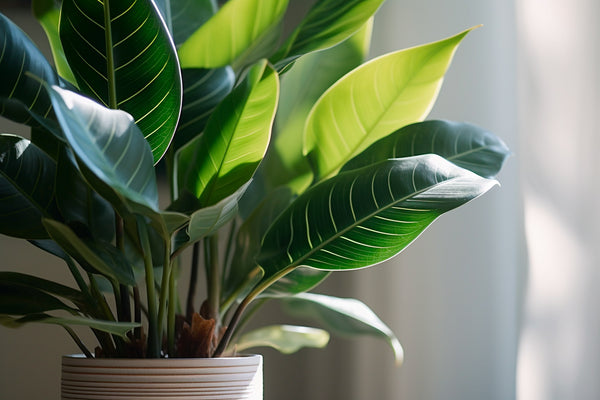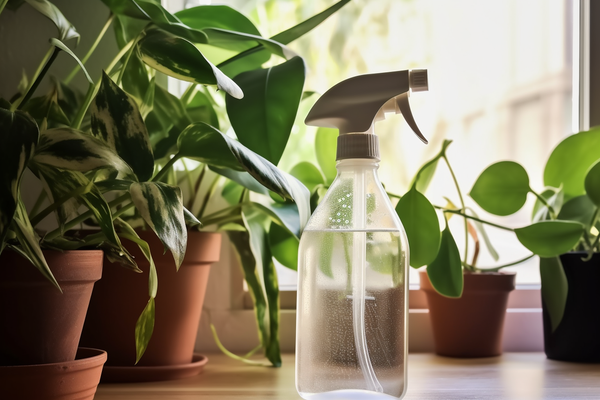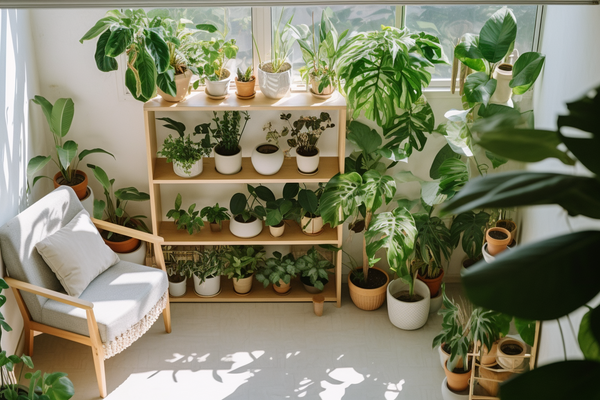Ever gazed at your indoor plants and wished their leaves shimmered just a tad more? You're not alone. Shiny leaves aren't just about aesthetics; they're a sign of a happy, healthy plant. And guess what? You don't need to resort to chemicals to get that glossy look. Nature has provided us with some fantastic, eco-friendly solutions. Let's dive in!
Why Shiny Leaves Matter

Alright, let's get to the root of it. Why are we all so obsessed with shiny leaves?
The Aesthetic Appeal
Imagine this: Sunlight streaming through your window, casting a gentle glow on your indoor plants. Now, picture those leaves reflecting that light, almost like nature's own little mirrors. It's a sight to behold, right? Glossy leaves can transform your space, giving it a fresh, vibrant feel.
Health Benefits for the Plant
But it's not just about looks. Did you know that shiny leaves can actually help your plant breathe better? Yep! Clean, shiny leaves can absorb more light, leading to more efficient photosynthesis. It's like giving your plant a little energy boost. Plus, shiny leaves are often cleaner, which means they can respire without any hindrance. It's a win-win!
5 Natural Methods to Make Indoor Plant Leaves Shiny

So, how do we achieve this coveted shine without harming our green buddies? Let's explore some sustainable methods.
1. Using Water and Mild Soap
This is as basic as it gets, folks. All you need is some lukewarm water and a tiny drop of mild soap. It's like giving your plant a gentle bath.
Steps to Create the Mixture and How to Apply It:
- Mix a drop of mild soap in a bowl of lukewarm water.
- Dip a soft cloth or sponge into the mixture.
- Gently wipe each leaf, supporting it with your hand to avoid any damage.
- Use a clean cloth to wipe away any soap residue.
Benefits and When to Avoid:
This method is super gentle, making it great for most plants. However, if your plant has hairy leaves, like an African violet, skip the soap. Just plain water will do the trick.
2. Vinegar and Water Solution
Vinegar isn't just for salads! This kitchen staple is acidic, which helps break down the grime on leaves, leaving them squeaky clean and shiny.
Steps to Prepare and Use the Solution:
- Mix equal parts of water and white vinegar in a spray bottle.
- Spritz the solution onto the leaves, avoiding the soil.
- Wipe each leaf gently with a soft cloth.
Precautions to Consider:
While vinegar is fantastic for most plants, it's always a good idea to do a patch test first. Spray the solution on a small part of a leaf and wait for a day. If there's no adverse reaction, you're good to go!
3. Lemon Juice Spray
Ah, the humble lemon! Packed with citric acid, lemons are nature's cleaners. The acid helps break down the dirt and grime that can accumulate on your plant's leaves, leaving them not only clean but also with a natural shine.
Recipe for Creating a Lemon Juice Spray:
- Squeeze the juice from half a lemon into a bowl.
- Add about two cups of water to dilute the lemon juice.
- Pour the mixture into a spray bottle, and you're ready to go!
Tips for Application:
- Lightly mist the leaves with the lemon spray.
- Use a soft cloth to gently wipe each leaf, removing dirt and excess moisture.
- Always avoid over-spraying; a little goes a long way!
4. The Banana Peel Technique
Bananas aren't just delicious snacks; their peels can be plant pampering tools! The inside of a banana peel is rich in natural oils and minerals, which can give your plant leaves a beautiful, organic shine.
How to Use a Banana Peel for This Purpose:
- Eat a banana (or two) and save the peels.
- Using the inside of the peel, gently rub the surface of the leaves.
- Wipe away any residue with a soft cloth.
Benefits of This Method:
- It's 100% organic and eco-friendly.
- The minerals in the banana peel can nourish the leaves.
- It's a great way to reduce kitchen waste and repurpose banana peels.
5. Milk and Water Mixture
Milk, with its lactic acid content, can act as a gentle cleaner for plant leaves. The acid breaks down dirt while the fats in the milk leave a soft sheen on the leaves.
Steps to Mix and Apply the Solution:
- Mix equal parts of milk and water in a bowl.
- Dip a soft cloth into the mixture.
- Gently wipe the leaves, ensuring you don't leave them too wet.
Points to Consider for Best Results:
- Always use whole milk for better results due to its higher fat content.
- Be cautious with plants that have a lot of texture or fuzz on their leaves; they might not react well to a milk mixture.
- After cleaning, ensure the room has good ventilation to let the leaves dry naturally.
Things to Avoid

1. Commercial Leaf Shines
While it might be tempting to reach for that bottle of commercial leaf shine for a quick fix, it's essential to pause and consider the ingredients. Many commercial shines contain chemicals and aerosols that might not be eco-friendly or sustainable.
Potential Harm to Plants:
- Some leaf shines can clog the stomata (tiny pores) of the leaves, affecting the plant's ability to breathe.
- Chemical residues can attract more dust and dirt in the long run.
- Overuse can lead to a buildup that's hard to remove and can make leaves look dull over time.
2. Over-shining the Leaves
While we all love the look of shiny leaves, there's a fine line between healthy shine and overdoing it. Over-shining can make leaves look unnatural and even plastic-like.
How It Can Affect Plant Health:
- Overly glossy leaves can reflect too much light, affecting photosynthesis.
- A heavy shine can trap moisture, increasing the risk of fungal infections.
- It can also attract pests that thrive in overly moist conditions.
Regular Maintenance for Shiny Leaves

Just like us, plants benefit from a regular cleaning routine. Dust and grime can accumulate over time, affecting the plant's overall health. Regular cleaning ensures that the leaves can breathe and photosynthesize efficiently.
Tips for Maintaining the Shine Over Time:
- Make it a habit to check your plants weekly.
- Use a soft brush or cloth to dust off the leaves gently.
- Rotate your plants occasionally to ensure even light distribution, which can help maintain a natural shine.
- Ensure proper humidity levels, as dry air can make leaves look dull.
- Consider pots with good drainage made from materials like terracotta and other sustainable materials, which allow the soil to breathe.
Conclusion
And there we have it, plant enthusiasts! From the wonders of lemon juice and banana peels to the cautionary tales of commercial shines, we've journeyed through the world of plant leaf care.
The key takeaway? Nature often provides the best solutions. So, the next time you're about to reach for that bottle of leaf shine, remember the natural methods we've discussed. Your plants will thank you, and so will Mother Earth.
References
Houseplant Resource Center. (2021). How to Make Plant Leaves Shiny and Glossy With Leaf Shine. https://houseplantresourcecenter.com/2021/09/how-to-make-plant-leaves-shiny-and-glossy-with-leaf-shine/
Wilson, S. (2023, January 17). How to make indoor plant leaves shiny: 5 simple methods. Homes & Gardens. https://www.homesandgardens.com/gardens/how-to-make-indoor-plant-leaves-shinyFrom Waste to Resource
Our efforts and commitment to waste reduction and sustainability begin with our production process.
Plastic and agriculture wastes are repurposed and utilized through innovative transformation into a biodegradable composite material.

